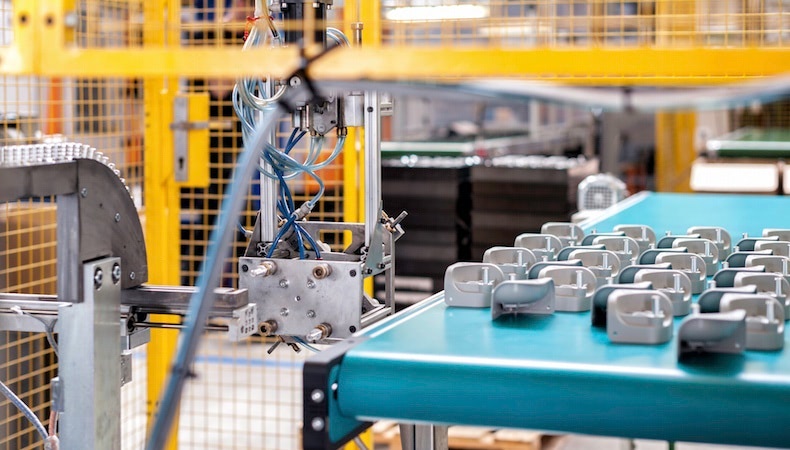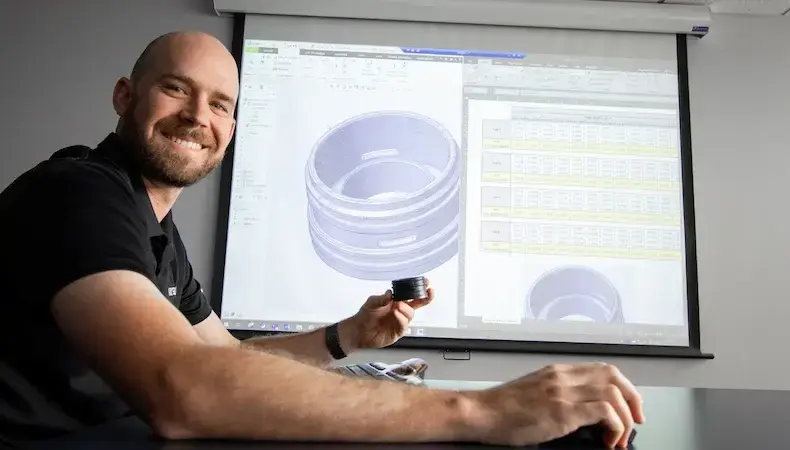Plastic part design

Plastics continue to become manufacturers' primary solution to weight, sustainability and compliance challenges. Yet, performance is largely dictated by the resin chosen for a specific injection-molded part.
The question is, which material is the right one?
For an accurate answer, manufacturers turn to Finite Element Analysis (FEA) of plastic components and custom injection molders experienced in all aspects of testing.
Strength and flexibility are key characteristics in determining a resin's suitability for use. FEA allows for the precise examination of both by dividing an injection-molded part into finite-sized units of simple shape. Mathematical equations are used to test each unit for displacement, from which key stress and strain data are derived.
FEA revolves around the stress-strain curve (or plot), which is distinctive for each resin. The stress-strain curve reflects the amount of deformation (strain) that is caused by tensile/compressive loading (stress, or pressure).
The shape of the curve is determined by:
The final curve reveals the critical properties of the resin and its potential alignment with the intended use. Stress-strain curves may be non-linear or linear, depending upon if the resin being analyzed is unreinforced or reinforced.
Unreinforced plastics have a very non-linear (curvy) stress-strain line up to the yield point and must be analyzed with equations derived for non-linear materials, not linear materials.
This is an important distinction as some molders:
Either shortcut can provide misleading results. An experienced injection molder will use the actual stress-strain curve information to ensure accuracy in non-linear FEA testing.
Glass can be added for strength/stiffness and to increase temperature resistance in many plastics. Glass-reinforced plastic parts may be easily evaluated using linear FEA techniques. Linear FEA assumes “small displacement” of the part being analyzed and uses an appropriate equation to solve the calculations more quickly.
Typically, yield strength and ultimate strength are equivalent so the stress-strain curve stays linear. Glass fiber is much stiffer than the base resin and overwhelms the non-linear properties of the resin. Fiber-reinforced resins behave much like metal, but rather than stretching/yielding at a certain point, the material just breaks. There is no true yield point.
Another reinforcement issue is knit line strength. A resin melt flow front splits to go around a core pin or opening in the part during the injection molding process. When the flow front meets the other half of the split on the backside of the opening, a knit line occurs.
A butt-type knit joint where the flow fronts meet “face-to-face” is the most detrimental injection glass-reinforced resin injection molding outcome. A flow front pushes any smoke, trapped air, or mold surface contamination ahead of it. All of these elements are concentrated at the knit line and weaken the bond between the two fronts. Should butt-type knit joints occur when using fiber-reinforced resin, the knit joints are even weaker since the fiber cannot cross over knit lines.
A similar condition exists wherein the flow fronts meet and then flow side-by-side to finish filling the injection-molded part. While not desirable, this molding defect is less severe than a butt-type knit joint since any contamination could be pushed and deposited in front of the flow front.
Generally speaking, sophisticated FEA mold flow software predicts resin flow within tooling. Results from an FEA simulation are used to:
The information gleaned from mold flow analysis is granular and critical. It's imperative to partner with a proven injection molder that has in-house engineers capable of running mold flow software and accurately interpreting results. Production and performance of an injection-molded part's complex geometries, tight tolerances, and other intricacies could hang in the balance.
Effective FEA processes and simulation hinge on the in-depth knowledge engineers possess about the material they are evaluating and could ultimately be using. Not all injection molders are able to tap into this level of experience. Fewer still have in-house engineers who are specially trained in plastics behavior — a notable distinction for Kaysun, and a competitive advantage for you.
Plastics Selection for Industrial Applications explores how a true, well-rounded injection molding partner like Kaysun can help you assess injection molding projects from a materials perspective to potentially save time, money, or both. Click the button below to download your copy of this valuable guide now.
SOURCE: Grand View Research, Plastic Market Size, Share, and Trends ... 2021-2028, April 2021


Shrink rates for plastic parts vary depending on the materials used and the unifor…
READ MORE

In many complex industries, decisions about which injection molder to use for cust…
READ MORE

Technologies, product needs, and customer expectations are rapidly advancing. OEMs…
READ MORE